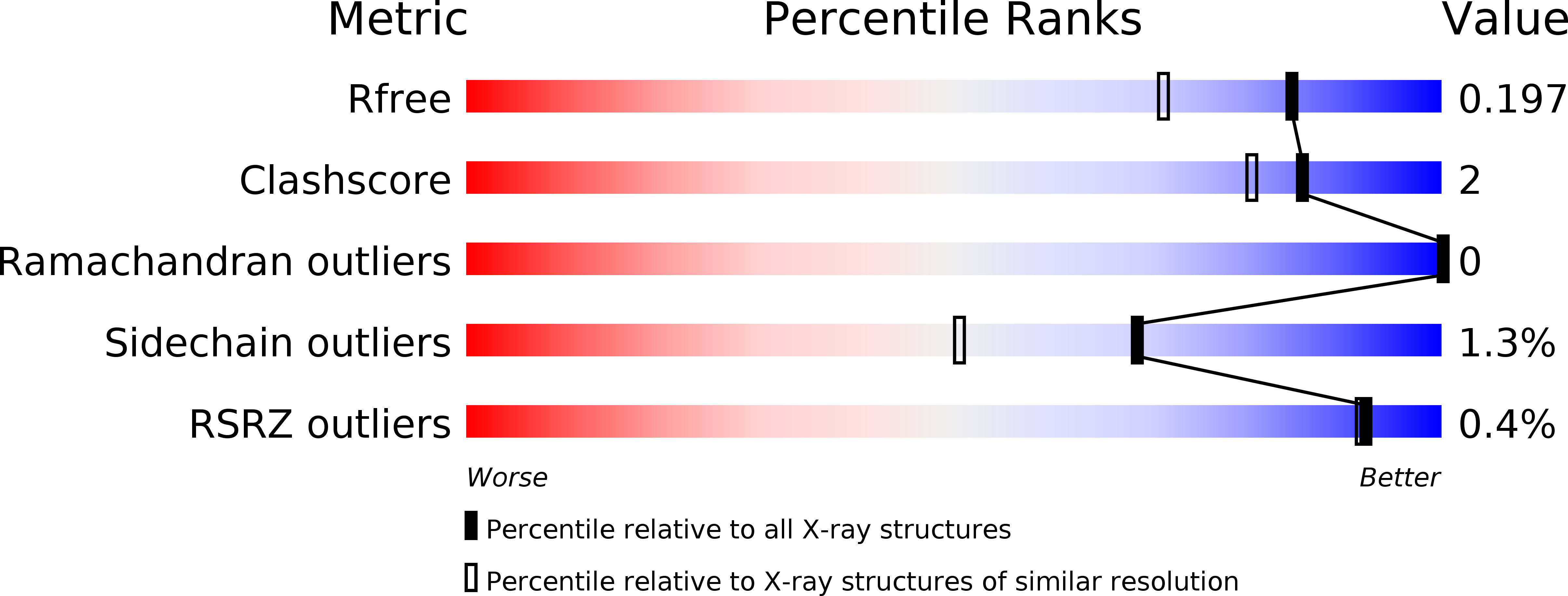
Deposition Date
2019-03-14
Release Date
2020-06-10
Last Version Date
2024-11-20
Entry Detail
PDB ID:
6O9S
Keywords:
Title:
Crystal structure of Staphylococcus aureus MecR1 antibiotic-sensor domain in complex with avibactam
Biological Source:
Source Organism:
Staphylococcus aureus (Taxon ID: 1280)
Host Organism:
Method Details:
Experimental Method:
Resolution:
1.59 Å
R-Value Free:
0.19
R-Value Work:
0.15
R-Value Observed:
0.15
Space Group:
P 41 21 2


